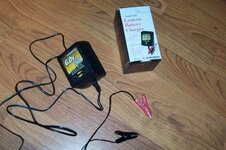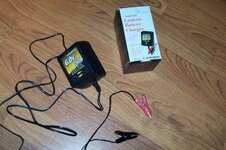Could someone give me detailed intstructions on setting up an electrolysis unit. I have been using a 12 volt converter with little success. I live near the beach and some of the coins come out really cruddy.
Thanks,
Kirk
Thanks,
Kirk




 ower unit the rectifier is awesome and I'll be getting one in a few weeks when I might have the money (thanks Floater) But this here in the picture below is a great cheep reliable unit you can pick up at radio shack
ower unit the rectifier is awesome and I'll be getting one in a few weeks when I might have the money (thanks Floater) But this here in the picture below is a great cheep reliable unit you can pick up at radio shack




